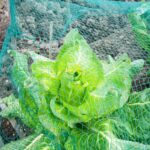Are you considering starting an in-home vegetable garden? Whether you have limited outdoor space or simply want the convenience of growing your own produce at home, in-home vegetable gardens are a great way to enjoy fresh, organic vegetables right from your own backyard or even inside your home. With the right knowledge and preparation, anyone can successfully grow their own vegetables without much hassle.
In this article, we will discuss the many benefits of growing vegetables at home and provide tips on choosing the right location, selecting the best vegetables to grow, preparing the soil, planting and caring for your vegetables, dealing with pests and diseases, as well as harvesting and enjoying the fruits of your labor. We will also explore how to maintain and sustain your in-home vegetable garden for long-term success.
By the end of this article, you will have a comprehensive understanding of what it takes to start and maintain a thriving in-home vegetable garden. So whether you’re new to gardening or looking to improve your skills, read on for all the information you need to get started on your own in-home vegetable garden journey.
Benefits of Growing Vegetables at Home
Growing vegetables at home can provide a wide array of benefits for individuals and families. One of the main advantages of in home vegetable gardens is the ability to have access to fresh and organic produce at any time. This means that you can enjoy nutritious, pesticide-free vegetables straight from your own garden, promoting a healthier lifestyle for you and your loved ones.
In addition to the health benefits, in home vegetable gardens can also help reduce grocery expenses since you won’t need to purchase as many vegetables from the store. This leads to cost savings in the long run, especially if you are able to successfully cultivate a variety of vegetables in your garden.
Furthermore, growing vegetables at home allows you to have control over the cultivation process, ensuring that no harmful chemicals or pesticides are used on your produce. This promotes environmental sustainability and reduces the carbon footprint associated with transporting commercially grown vegetables.
In home vegetable gardens also serve as a therapeutic and rewarding hobby for individuals who enjoy spending time outdoors and tending to their plants. Whether it’s for physical exercise or simply relaxation, cultivating a home garden can be an enjoyable activity for people of all ages.
Choosing the Right Location for Your in Home Vegetable Garden
When it comes to creating an in-home vegetable garden, choosing the right location is crucial for the success of your plants. The ideal location for your garden should receive at least 6-8 hours of sunlight per day, as most vegetables require ample sunlight to thrive. Additionally, the location should have easy access to water, whether through a nearby hose or watering can.
Sunlight Requirements
Different vegetables have varying sunlight requirements, so it’s important to consider the specific needs of the plants you intend to grow. Leafy green vegetables such as lettuce and spinach may tolerate partial shade, while fruiting vegetables like tomatoes and peppers require full sunlight. Take note of the sun patterns in your chosen location throughout the day to ensure that your plants will receive adequate sunlight.
Proximity to Water Source
Convenience is key when it comes to watering your in-home vegetable garden. Being located near a water source will make it easier for you to keep your plants hydrated, especially during dry periods or hot weather. Consider positioning your garden within reach of a hose or close proximity to a rain barrel for sustainable watering options.
Space and Accessibility
The location of your in-home vegetable garden should also offer sufficient space for your plants to grow and ample accessibility for you to tend to them. Avoid areas with heavy foot traffic or where pets may disturb your plants.
Additionally, consider the proximity of the garden to your home for easy access when harvesting produce or performing maintenance tasks. By carefully choosing the right location for your in-home vegetable garden, you can set yourself up for a successful and bountiful harvest.
Selecting the Best Vegetables to Grow in Your Home Garden
When it comes to selecting the best vegetables to grow in your home garden, there are a few factors to consider. You should take into account your local climate, the amount of space you have available, and your own personal preferences when it comes to the types of vegetables you enjoy eating. Here are some tips for choosing the best vegetables for your in home vegetable garden.
Consider Your Climate
The first step in selecting the best vegetables for your home garden is to consider your local climate. Certain vegetables thrive in specific climates, so it’s important to choose varieties that will do well in your area. For example, tomatoes and peppers typically require a longer growing season and warmer temperatures, while leafy greens like lettuce and spinach can tolerate cooler weather.
Assess Your Available Space
Another important factor to consider when choosing vegetables for your home garden is the amount of space you have available. If you have limited space, you may want to focus on growing smaller plants like herbs, cherry tomatoes, or green beans. On the other hand, if you have more room to work with, you can consider larger plants like cucumbers, squash, or melons.
Personal Preferences
Finally, don’t forget to consider your own personal preferences when choosing vegetables for your home garden. It’s important to grow vegetables that you and your family will enjoy eating.
Think about the types of dishes you like to cook and eat, and choose vegetables that will be a welcome addition to your meals. After all, one of the greatest joys of having an in home vegetable garden is being able to enjoy fresh, delicious produce right from your own backyard.
Preparing the Soil for Your in Home Vegetable Garden
When it comes to preparing the soil for your in home vegetable garden, taking the time to properly do so will greatly benefit the health and productivity of your plants. Here are some key steps to consider when preparing the soil for your in home vegetable garden:
- Test the Soil: Before you start any preparation, it’s important to test the pH and nutrient levels of your soil. You can purchase a DIY testing kit or send a sample to a local agricultural extension office for analysis. This will help you determine if any adjustments need to be made.
- Amend the Soil: Based on the results of your soil test, you may need to add organic matter, such as compost or manure, to improve the soil structure and fertility. Adding organic matter helps retain moisture, improves drainage, and provides essential nutrients for plant growth.
- Till the Soil: Once you’ve added any necessary amendments, you’ll want to till or turn over the soil to incorporate everything together. This helps break up compacted soil, distribute organic matter evenly, and create a loose, aerated environment for root development.
Properly preparing your soil sets the foundation for a successful in home vegetable garden. By taking these steps before planting, you’re providing your plants with an optimal environment for healthy growth and bountiful harvests.
Remember that different types of vegetables may have specific soil requirements, so it’s important to research each crop’s needs before planting in your in home vegetable garden.
Tips for Planting and Caring for Your Home Garden Vegetables
When it comes to planting and caring for your home garden vegetables, there are a few key tips to keep in mind to ensure a successful harvest. Whether you are a seasoned gardener or just starting out with your in home vegetable garden, these tips will help you maximize the potential of your plants.
Here are some important tips for planting and caring for your home garden vegetables:
- Start with healthy plants: When planting vegetables in your home garden, it’s essential to start with healthy seedlings or transplants. Look for plants that have sturdy stems, green leaves, and no signs of pests or diseases.
- Proper spacing: It’s crucial to give your plants enough space to grow and thrive. Be sure to follow the recommended spacing guidelines for each type of vegetable you plant. Crowding can lead to poor air circulation and increased risk of disease.
- Watering and fertilizing: Consistent watering is essential for the success of your in home vegetable garden. Most vegetables require at least 1 inch of water per week, either from rainfall or irrigation. Additionally, be sure to fertilize your plants as needed, following the recommendations on the fertilizer packaging.
- Mulching: Mulching around your vegetable plants can help conserve moisture, suppress weeds, and regulate soil temperature. Organic mulches such as straw or compost are excellent choices for in home vegetable gardens.
By paying attention to these planting and caring tips, you can ensure that your home garden vegetables have the best possible chance of thriving and producing a bountiful harvest. Happy gardening.
Dealing With Common Pests and Diseases in in Home Vegetable Gardens
One of the challenges that home gardeners face when growing vegetables is dealing with pests and diseases. These can cause significant damage to your plants if not properly managed. However, there are several strategies that you can use to prevent and manage these issues in your in home vegetable garden.
One important step in pest and disease management is practicing good sanitation. This means regularly removing any dead or diseased plant material from your garden, as well as cleaning tools and equipment to prevent the spread of diseases. Additionally, providing proper air circulation between plants can help reduce the likelihood of certain diseases taking hold in your garden.
Another effective strategy for managing pests and diseases in in home vegetable gardens is to encourage natural predators. For example, ladybugs, lacewings, and parasitic wasps are all beneficial insects that feed on common garden pests. By planting flowers such as dill, fennel, and yarrow, you can attract these helpful insects to your garden.
In addition to these preventive measures, it’s also important to regularly inspect your plants for signs of pest infestation or disease. By catching these issues early, you can take appropriate action to mitigate the damage and protect the overall health of your in home vegetable garden.
| Strategy | Effectiveness |
|---|---|
| Good sanitation | Highly effective |
| Encouraging natural predators | Effective |
| Regular inspection | Effective |
Harvesting and Enjoying the Fruits of Your Labor in Your Home Vegetable Garden
As the fruits of your labor begin to ripen, it’s time to harvest and enjoy the delicious vegetables from your in home vegetable garden. There’s nothing quite like picking a ripe tomato or plucking a fresh cucumber from your own backyard. Not only does harvesting your own produce provide a sense of accomplishment, but it also ensures that you are consuming fresh, organic vegetables that you have nurtured from seed to table.
One of the key benefits of having an in home vegetable garden is the ability to harvest produce at its peak ripeness. This means that you’ll be enjoying vegetables with maximum flavor and nutritional value. The convenience of having fresh vegetables just steps away from your kitchen also means that you can incorporate them into your meals immediately, further enhancing their taste.
In addition to the satisfaction and health benefits, harvesting from your home garden also helps reduce food waste. You can pick exactly what you need for a meal, minimizing the likelihood of unused produce spoiling in your refrigerator.
This sustainable approach to food consumption not only benefits your household but also has a positive impact on the environment. By growing and harvesting your own vegetables at home, you are contributing to reducing food packaging waste as well as lowering carbon emissions associated with transporting produce from farm to store to table.
| Benefits of Harvesting Your Own Produce | Benefits |
|---|---|
| Freshness and Nutritional Value | Maximum flavor and nutrition |
| Sustainability | Reduction of food waste and carbon emissions |
How to Maintain and Sustain Your in Home Vegetable Garden for Long-Term Success
In conclusion, in home vegetable gardens offer numerous benefits and the opportunity to enjoy fresh, organic produce right from your yard. By choosing the right location, selecting the best vegetables for your space, and properly preparing and caring for your garden, you can enjoy a bountiful harvest and long-term success. Despite the potential challenges of pests and diseases, with proper maintenance and sustainable practices, you can ensure the ongoing health and productivity of your in home vegetable garden.
Maintaining your in home vegetable garden for long-term success requires ongoing care and attention to ensure the health of your plants. Regular watering, weeding, and monitoring for pests and diseases are essential tasks to keep your garden thriving. Staying informed about sustainable gardening practices, such as composting and natural pest control methods, can also contribute to the long-term sustainability of your home garden.
Ultimately, the satisfaction of growing your own food at home is its own reward. Whether you are a seasoned gardener or just starting out with a few containers on a balcony or patio, in home vegetable gardens provide a sense of achievement and connection to nature. With dedication and proper maintenance, you can enjoy the fruits of your labor throughout the growing season while creating a sustainable source of fresh produce right in your own backyard.
Frequently Asked Questions
What Vegetables Can I Grow Inside the House?
There are several vegetables that can be grown inside the house, including tomatoes, lettuce, spinach, peppers, and herbs like basil and cilantro. These plants can thrive in containers or small pots with proper sunlight and care.
How Do I Start an Indoor Vegetable Garden?
To start an indoor vegetable garden, it’s important to choose a suitable location with ample sunlight. You’ll need to select the right containers for your plants, use quality soil, and water them regularly. It’s also essential to research the specific needs of each vegetable you plan to grow.
What Is a Good Layout for a Vegetable Garden?
A good layout for a vegetable garden depends on the available space and the types of vegetables you want to grow. Consider factors like sunlight exposure and access for watering and harvesting.
Some common layouts include raised beds, container gardens, or vertical gardening using shelves or hanging planters. The key is to optimize space while providing enough room for each plant to thrive.

If you’re looking to get into vegetable gardening, or are just looking for some tips on how to make your current garden better, then you’ve come to the right place! My name is Ethel and I have been gardening for years. In this blog, I’m going to share with you some of my best tips on how to create a successful vegetable garden.





